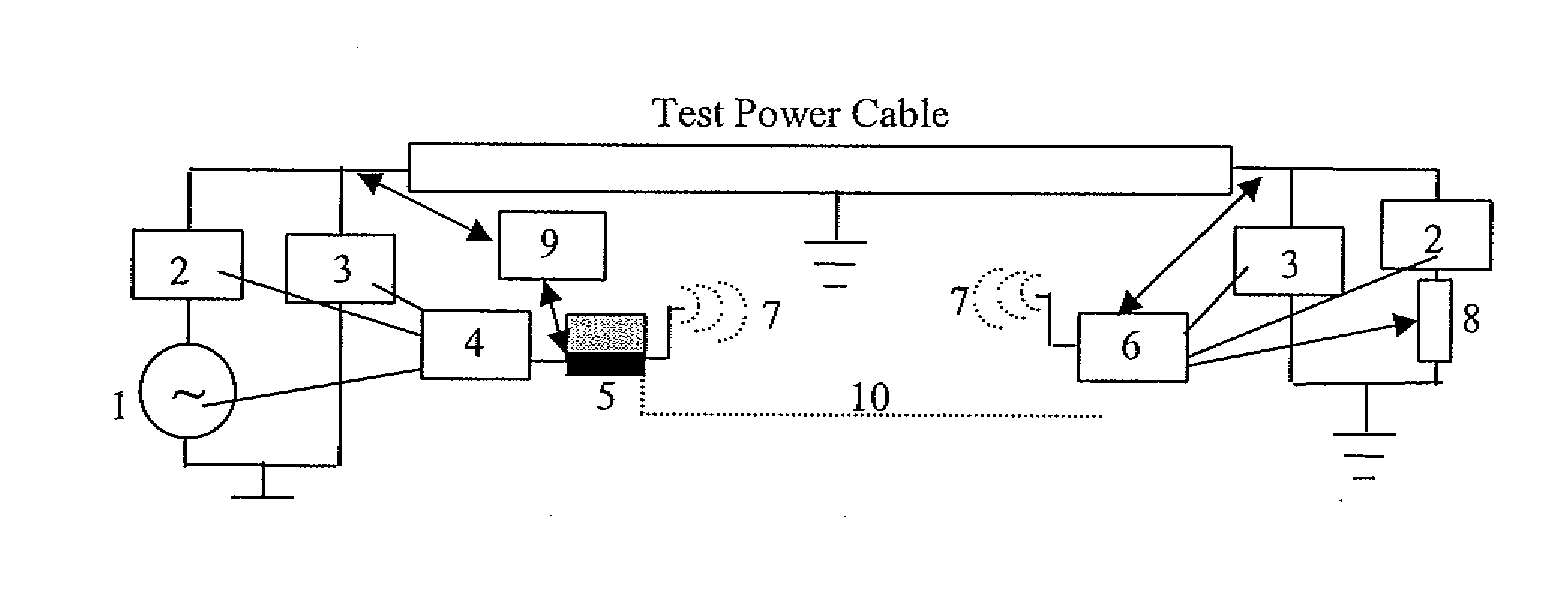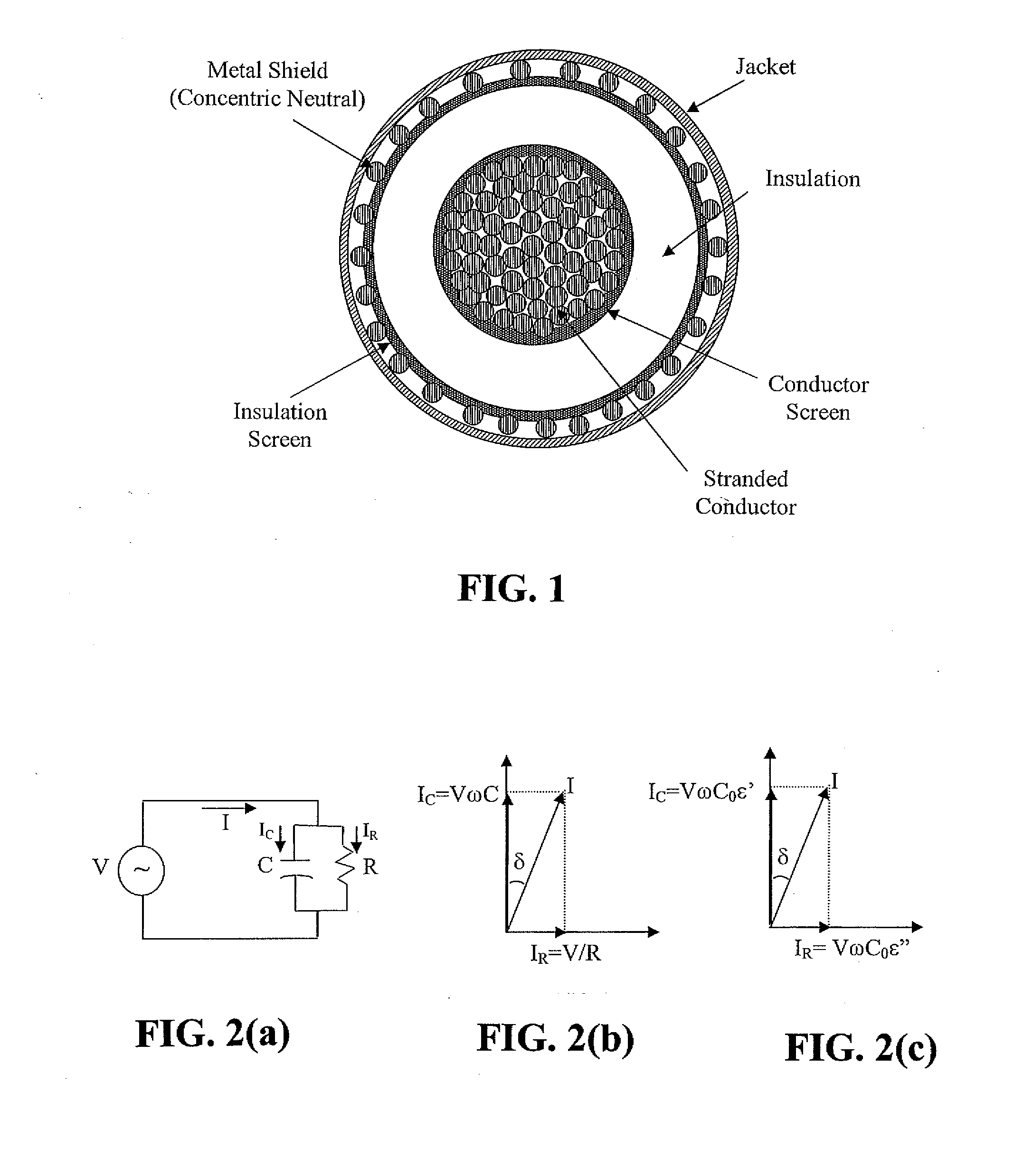Diagnostic methods for electrical cables utilizing axial tomography
a technology of axial tomography and diagnostic methods, applied in the direction of fault location by conductor type, line-transmission details, instruments, etc., can solve the problems of affecting the and affecting the quality of electrical cables. , to achieve the effect of convenient identification and location of defects
- Summary
- Abstract
- Description
- Claims
- Application Information
AI Technical Summary
Benefits of technology
Problems solved by technology
Method used
Image
Examples
Embodiment Construction
)
[0034]The disclosed cable diagnostic test methods, systems and apparatus utilize “standing wave” principles to identify and locate defect(s) along a power cable. As described herein, the disclosed methods / systems are effective in measuring dissipation factor (tan δ) and dielectric constant (∈′) associated with the insulation of a power cable, as well as the resistance (Rc) and inductance (Lc) associated with the conductor system, at discrete points along the cable's axial length. The disclosed methods / systems offer significant advantages for cable testing and related defect identification / location.
[0035]With reference to FIG. 2(a), the schematic circuit diagram represents a shielded power cable insulation subjected to an alternating voltage source, V=Vm sin(ωt), where Vm is the amplitude of the voltage and ω=2πf is the angular frequency, f being the frequency in Hz. The cable insulation is shown as a pure capacitance, C, across which is connected a resistance, R, representing the d...
PUM
 Login to View More
Login to View More Abstract
Description
Claims
Application Information
 Login to View More
Login to View More - R&D
- Intellectual Property
- Life Sciences
- Materials
- Tech Scout
- Unparalleled Data Quality
- Higher Quality Content
- 60% Fewer Hallucinations
Browse by: Latest US Patents, China's latest patents, Technical Efficacy Thesaurus, Application Domain, Technology Topic, Popular Technical Reports.
© 2025 PatSnap. All rights reserved.Legal|Privacy policy|Modern Slavery Act Transparency Statement|Sitemap|About US| Contact US: help@patsnap.com



